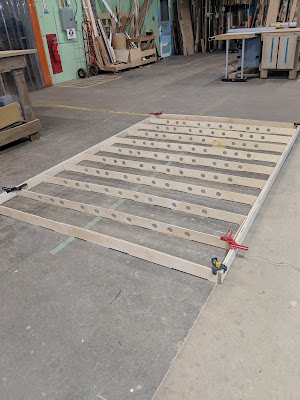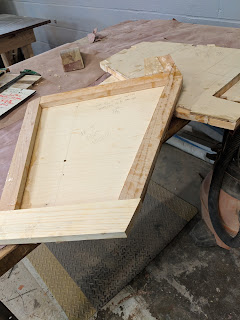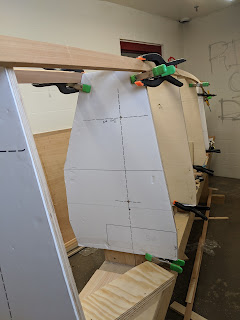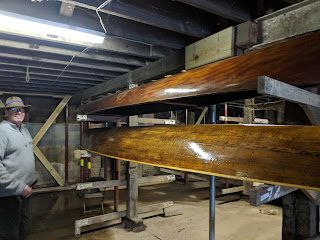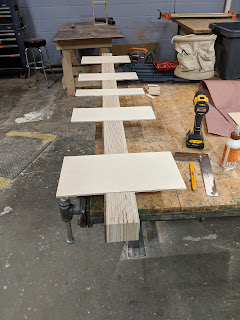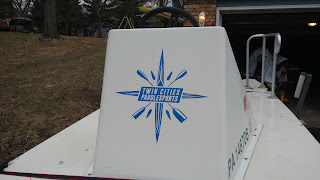You can never have too many clamps

Yes, really big picture of not much, but sometimes the day just happens. I was working solo today, so no pics of the tasks other than this one. Leveled and re-baselined all frames. We had been temporarily using one screw and then clamping the frame to the base in order to make adjustment easier. This did lead to some moments, but nothing critical. Did you know that a good smart phone has a dead on level that fits in tighter spots than my bubble level. The entire strongback and frames trued up to 89.9 degrees, +/- .05. A grain of sawdust will move the needle more than that! The work at the right is the two deck beams with an 11" spacer glued in between the cross-beam slots. This should make for a nice, tight alignment. After we take the clamps off tomorrow, these could still get a little weight taken out - they are 'robust'. I'll try to post updates this week as progress is made. There are a thousand little jobs that can be done in paralle...
